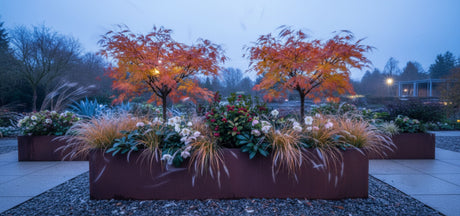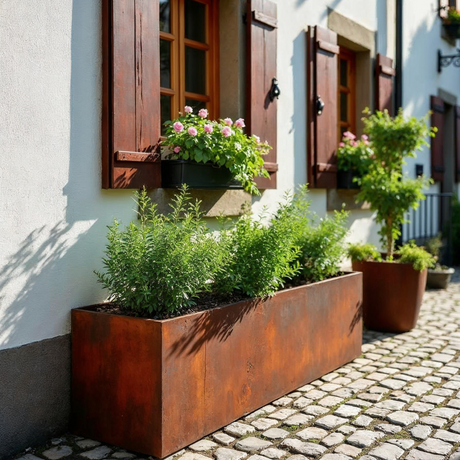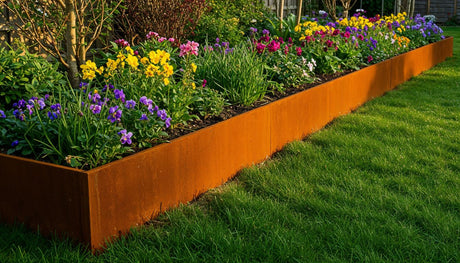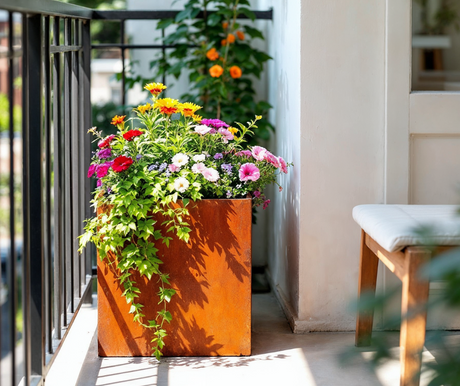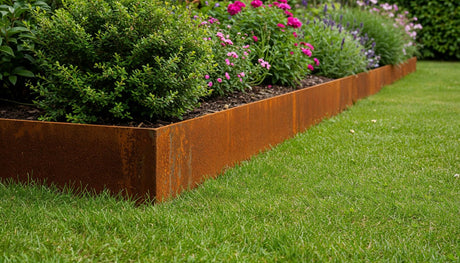Corten steel is known for its robust and elegant appearance. Its characteristic rusting process makes it popular in gardens and on patios. Before corten steel acquires its beloved orange-brown rust color, it must first rust. How this process occurs depends on different conditions. In this blog, you'll read all about how that process works and get tips on how to see the color faster.
The unique properties of corten steel
Corten steel is designed to develop a beautiful, protective layer of rust. This layer not only provides aesthetic value, but also protects the steel from further corrosion, requiring little maintenance. As a result, the steel remains beautiful for years and maintains its strength.
Once Corten steel is exposed to the outdoors, the process begins by itself. The interaction between humidity, rain and oxygen creates the unique color. Weather plays an important role in the rusting process. In humid environments with lots of rain, Corten steel develops a deep color faster, while in dry conditions the process takes longer and more subtle color variations occur.
Once the process is started, you can see the first colors after a few months, but it can take up to a year for full development, depending on specific environmental factors. Rain and morning dew speed up the process, while constant drought slows it down. The interaction with the weather makes each Corten steel product unique.
How long does the rusting process take until the planter is completely rusted?
The rusting process of Corten steel begins the moment the material is exposed to the outside air. Once this happens, a natural oxidation reaction starts that gives the steel its unique appearance. Depending on the specific weather conditions of the environment, it can take 4 to 12 months for the planter to fully rust and develop the characteristic orange-brown color that is so characteristic of Corten steel. In humid environments, where regular rainfall occurs, the rusting process will be considerably faster. This is because moisture promotes the oxidation reaction. On the other hand, dry conditions, where there is less moisture in the air, will slow down the rusting process. As a result, it may take longer to achieve the desired color and texture. So don't be alarmed when you remove a silver container from its packaging. From that point on, you simply need some patience.
 The accelerate rusting process of corten steel
The accelerate rusting process of corten steel
Although nature does its job, you can also speed up the rusting process. With these natural ways, you can easily and quickly contribute to the process:
-
Salt water spray: Dissolve sea salt in water and apply it evenly to the steel. This accelerates the oxidation process and causes the orange-brown color to develop faster.
-
Vinegar and water: Spray a mixture of vinegar and water on the corten steel. The vinegar promotes oxidation and helps the rust form faster.
-
Humid environment: Find a place with higher humidity, such as near a pond. This encourages rusting without additional resources.
Choosing natural accelerators means respecting the environment and avoiding harmful chemicals. This makes choosing Corten steel even more sustainable and conscious.
The benefits of corten steel in your garden
Its unique properties and natural rusting process make Corten steel a special material that offers both beauty and functionality. Whether you choose corten steel as an eye-catcher in your garden or as a sustainable solution for functional designs, corten steel remains a beautiful addition, year after year.

 The accelerate rusting process of corten steel
The accelerate rusting process of corten steel




